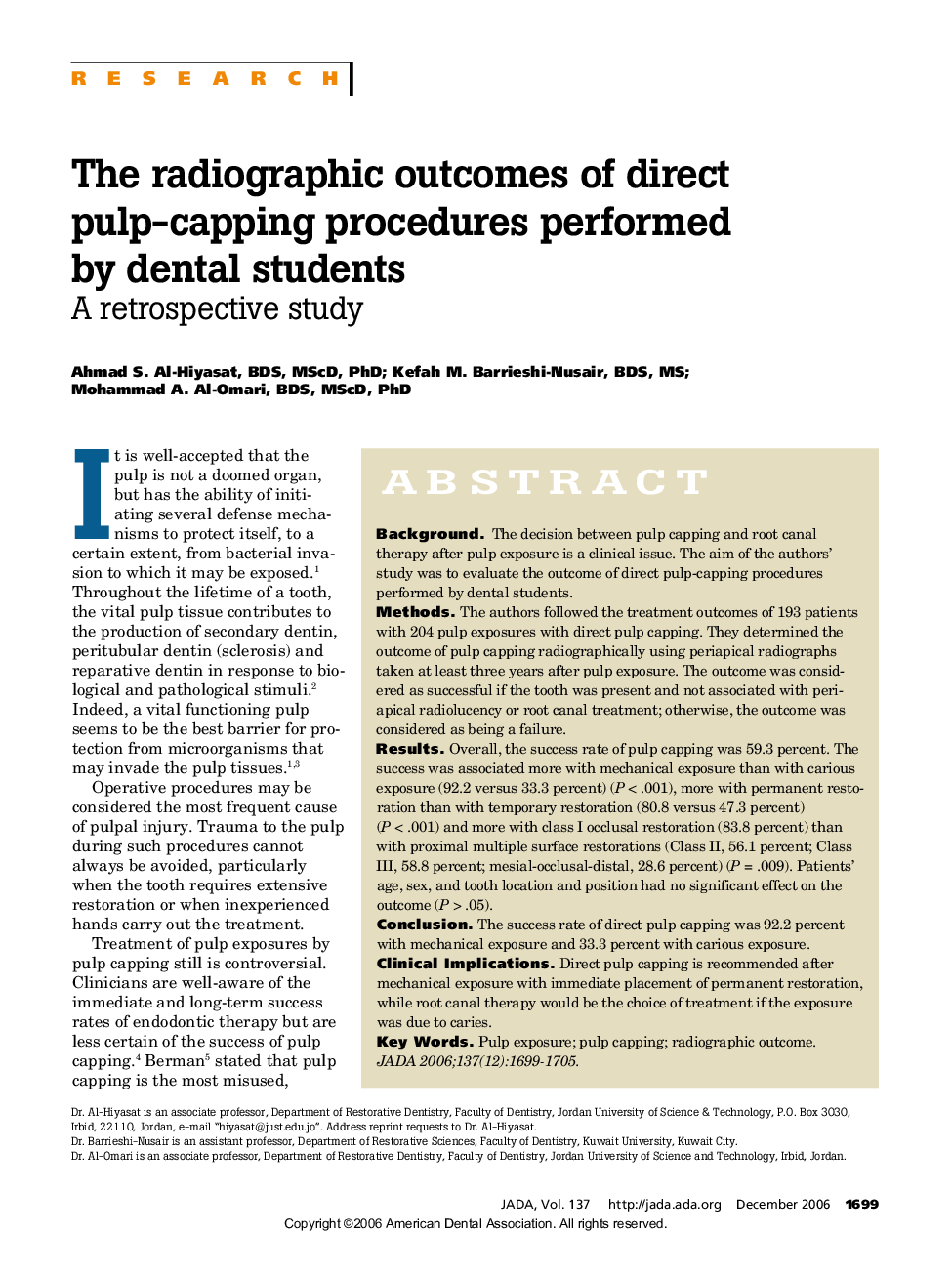| Article ID | Journal | Published Year | Pages | File Type |
|---|---|---|---|---|
| 3139911 | The Journal of the American Dental Association | 2006 | 7 Pages |
ABSTRACTBackgroundThe decision between pulp capping and root canal therapy after pulp exposure is a clinical issue. The aim of the authors' study was to evaluate the outcome of direct pulp-capping procedures performed by dental students.MethodsThe authors followed the treatment outcomes of 193 patients with 204 pulp exposures with direct pulp capping. They determined the outcome of pulp capping radiographically using periapical radiographs taken at least three years after pulp exposure. The outcome was considered as successful if the tooth was present and not associated with periapical radiolucency or root canal treatment; otherwise, the outcome was considered as being a failure.ResultsOverall, the success rate of pulp capping was 59.3 percent. The success was associated more with mechanical exposure than with carious exposure (92.2 versus 33.3 percent) (P < .001), more with permanent restoration than with temporary restoration (80.8 versus 47.3 percent) (P < .001) and more with class I occlusal restoration (83.8 percent) than with proximal multiple surface restorations (Class II, 56.1 percent; Class III, 58.8 percent; mesial-occlusal-distal, 28.6 percent) (P = .009). Patients' age, sex, and tooth location and position had no significant effect on the outcome (P > .05).ConclusionThe success rate of direct pulp capping was 92.2 percent with mechanical exposure and 33.3 percent with carious exposure.Clinical ImplicationsDirect pulp capping is recommended after mechanical exposure with immediate placement of permanent restoration, while root canal therapy would be the choice of treatment if the exposure was due to caries.
